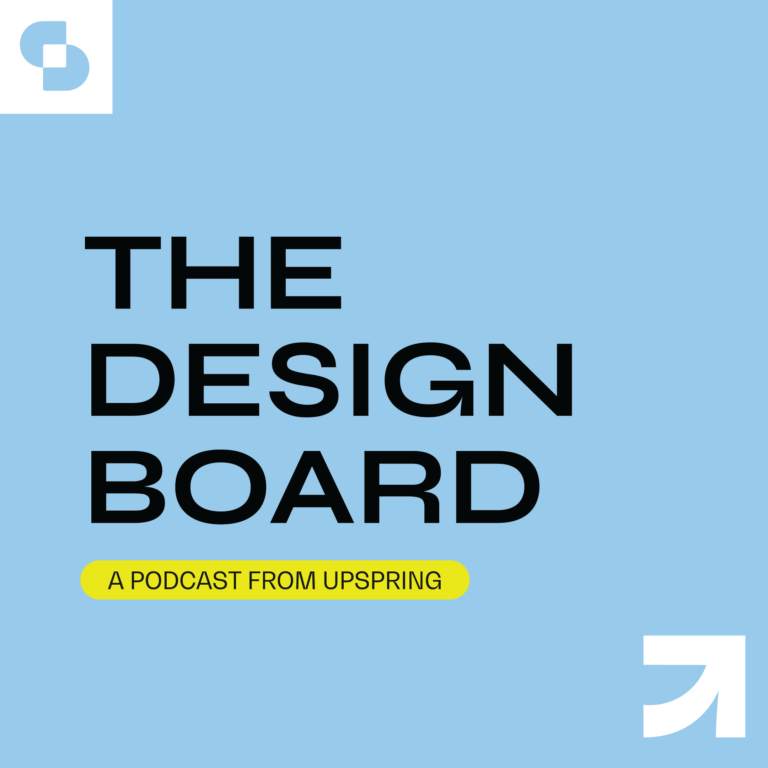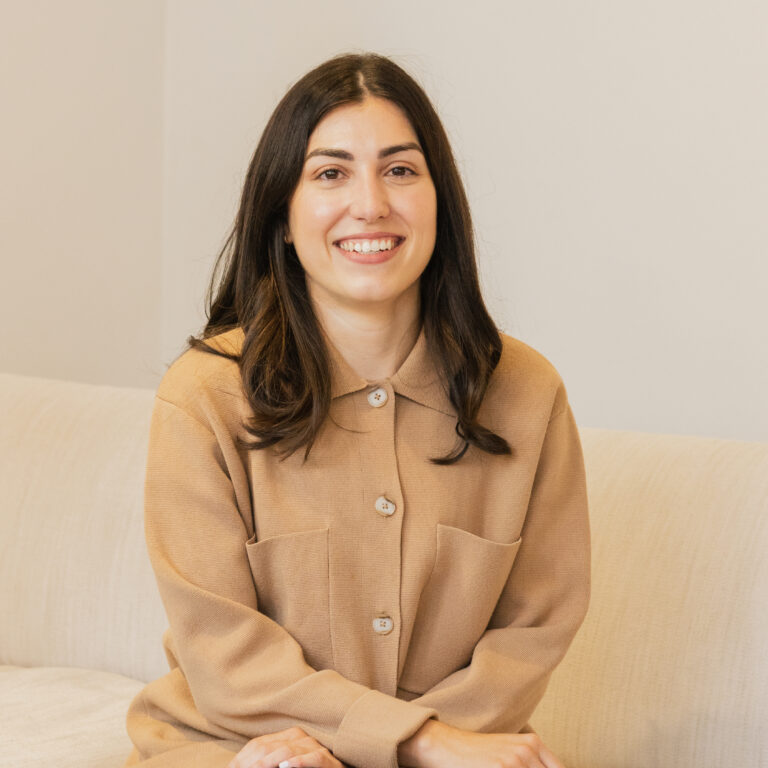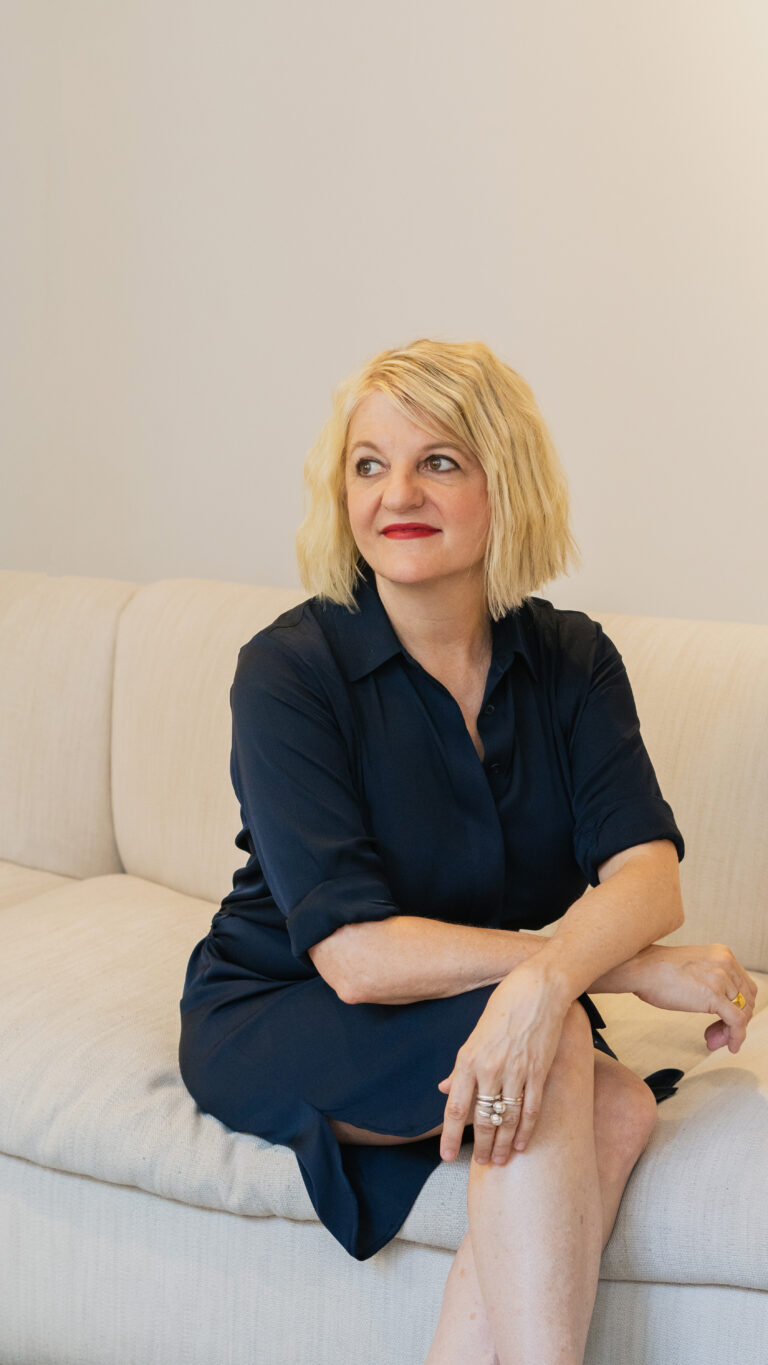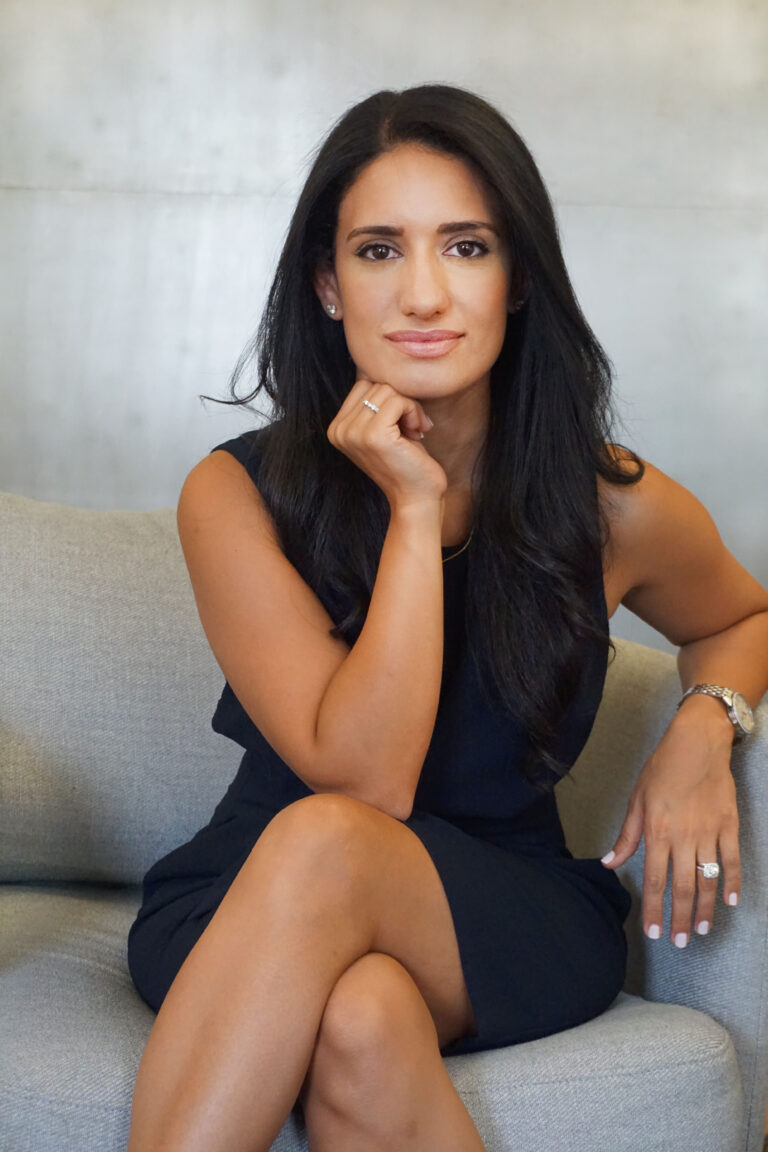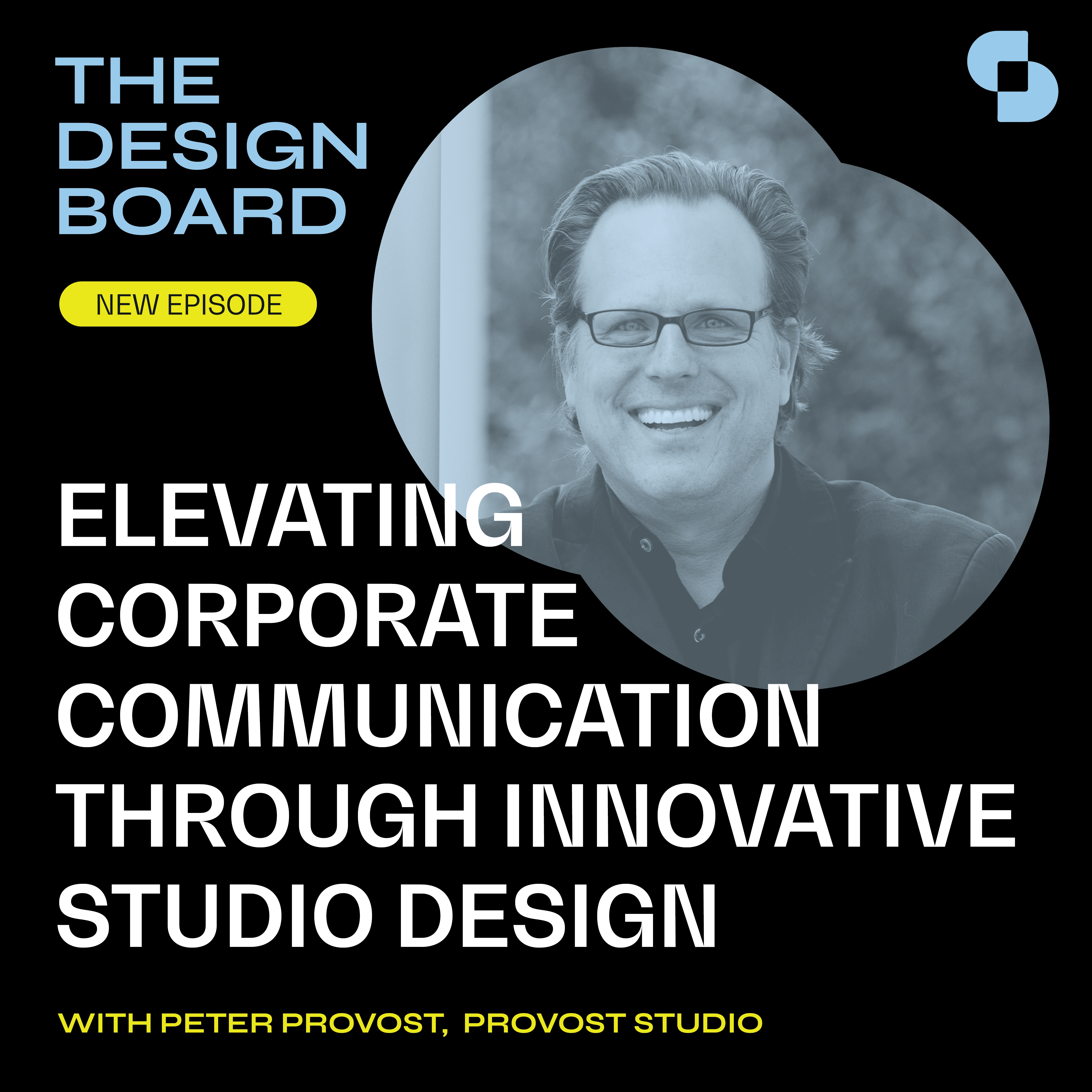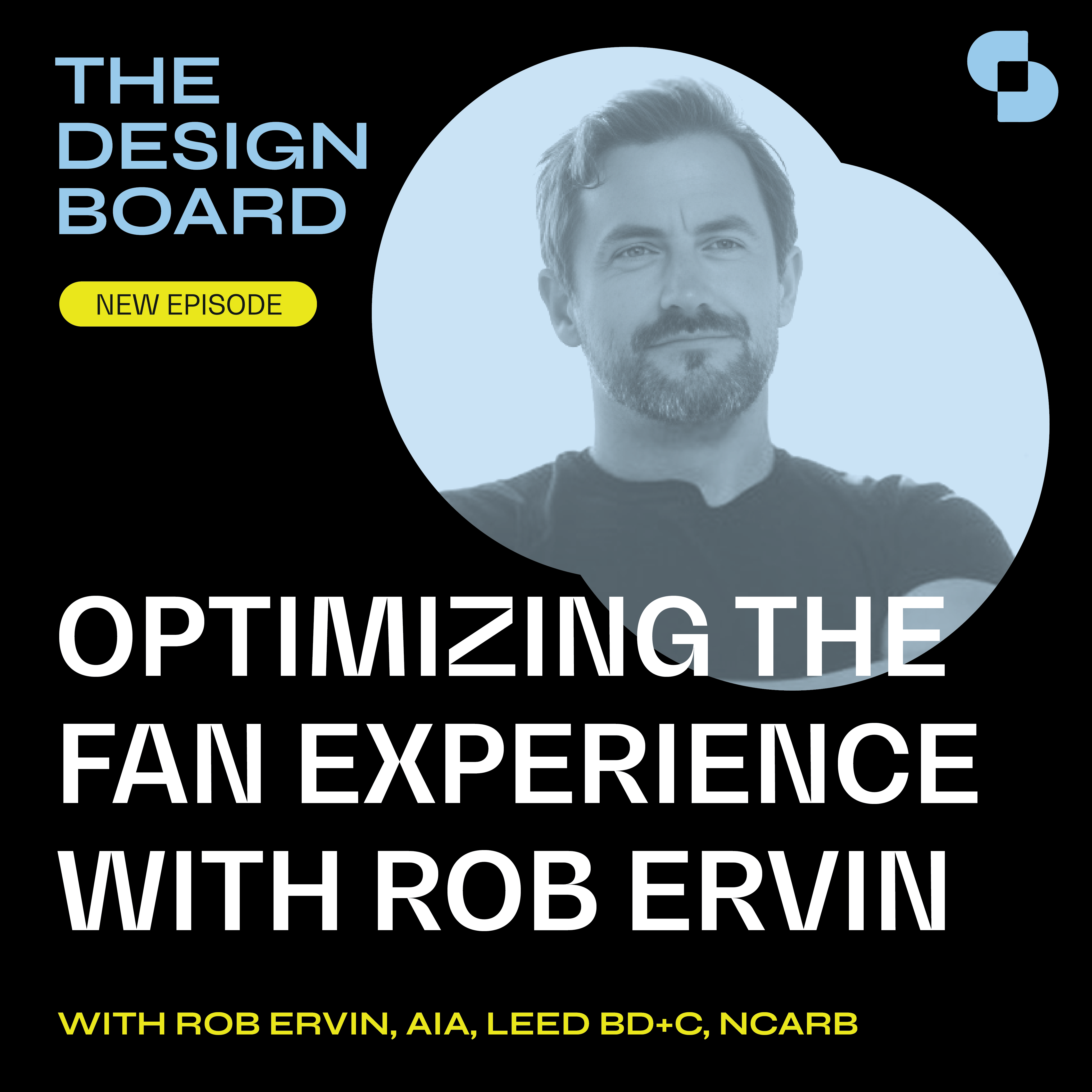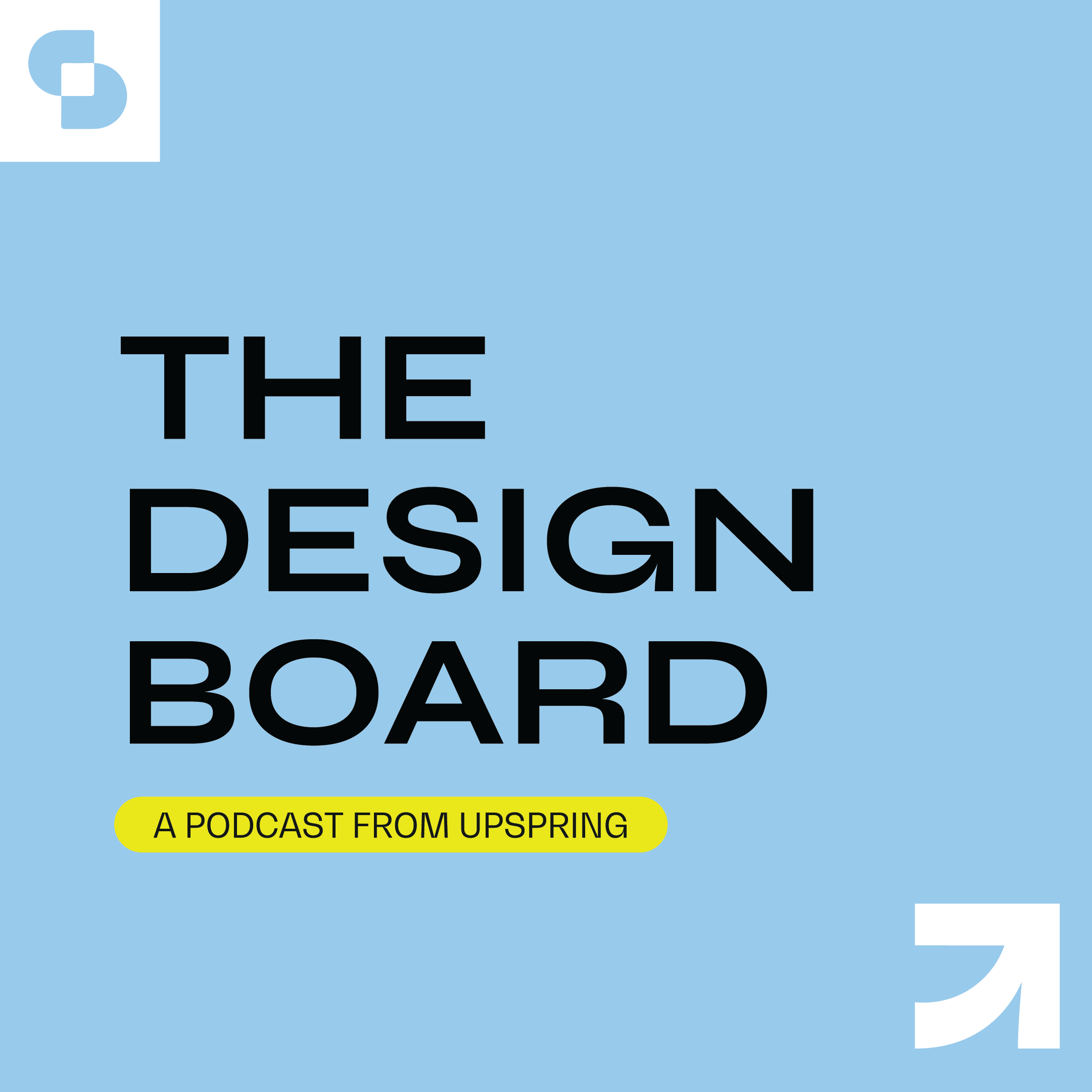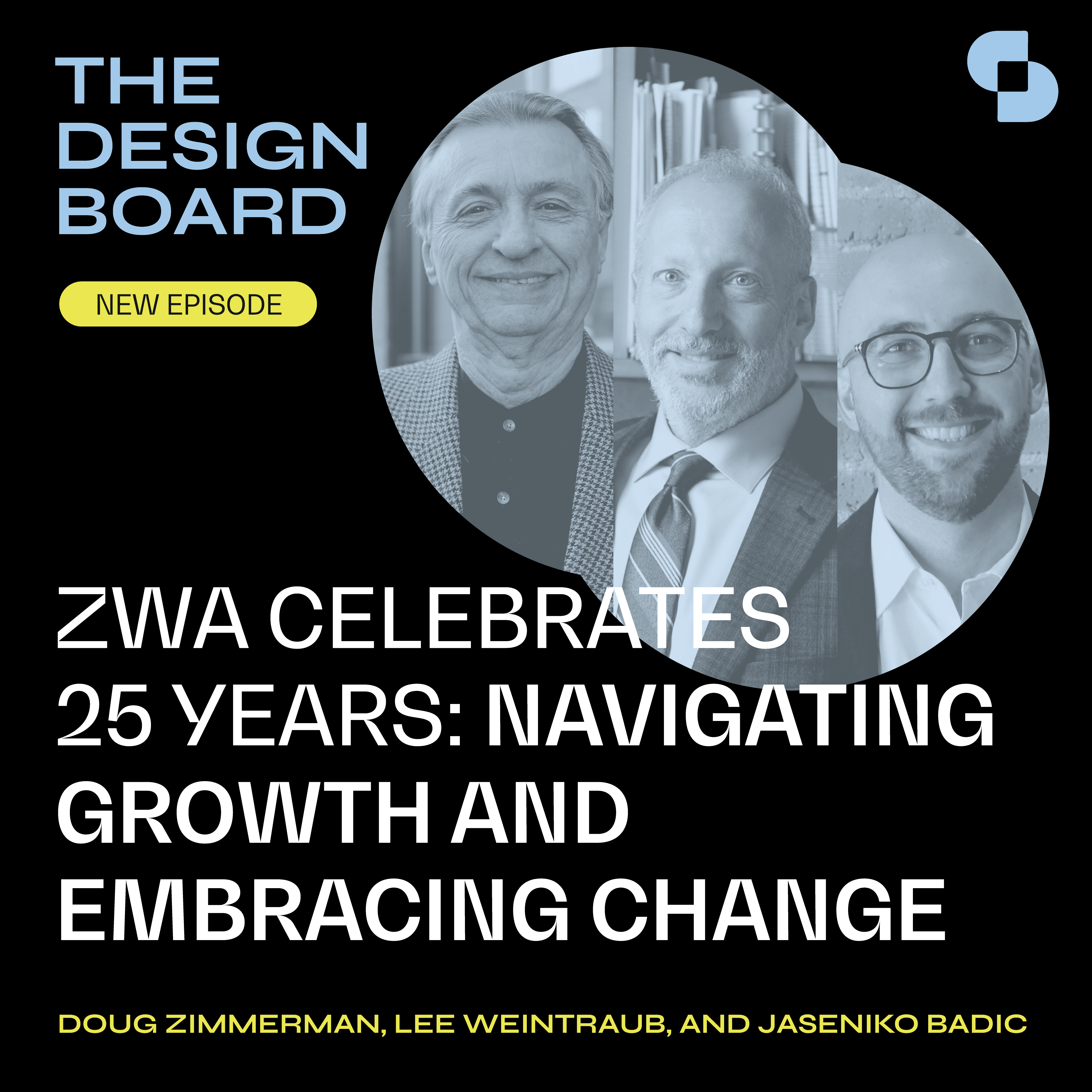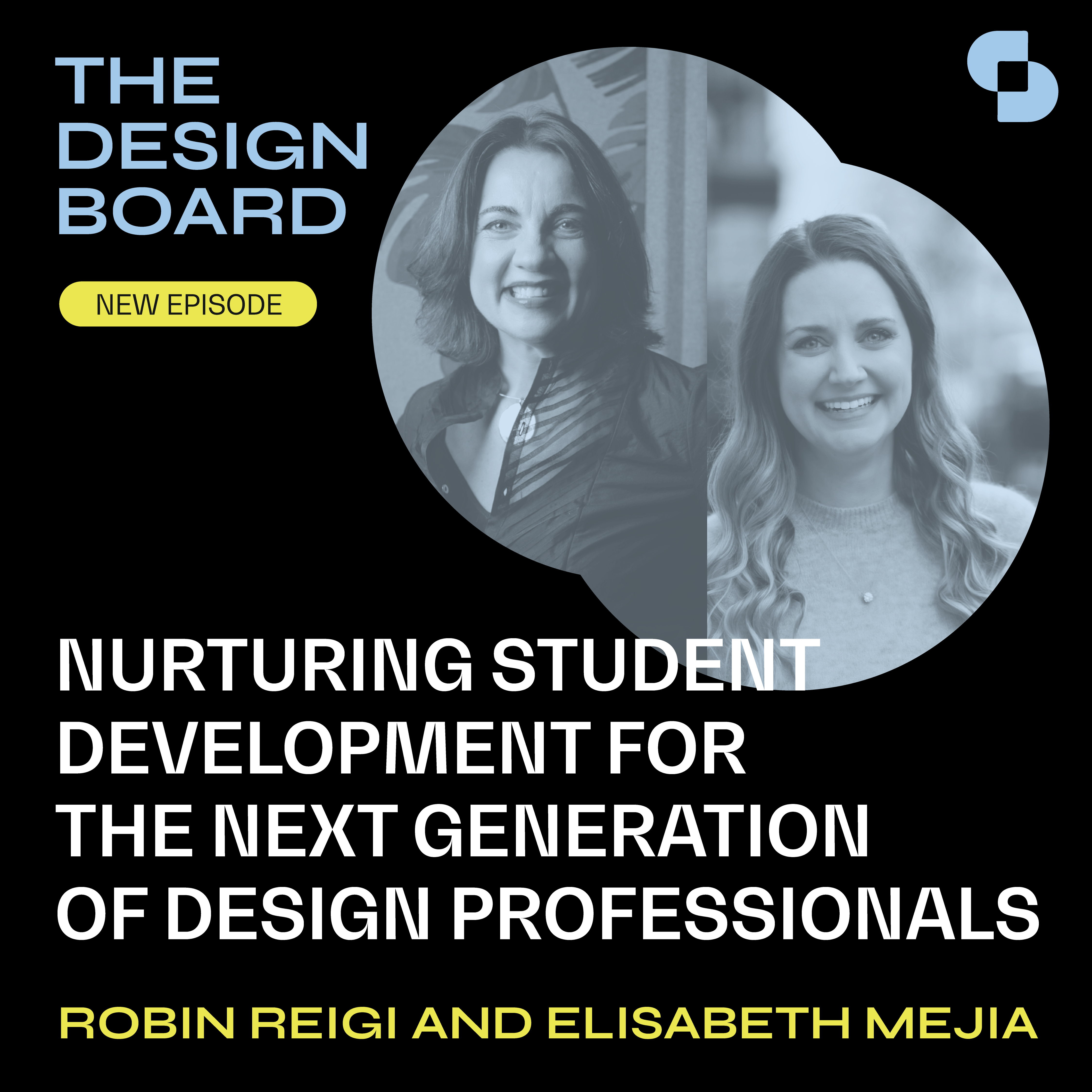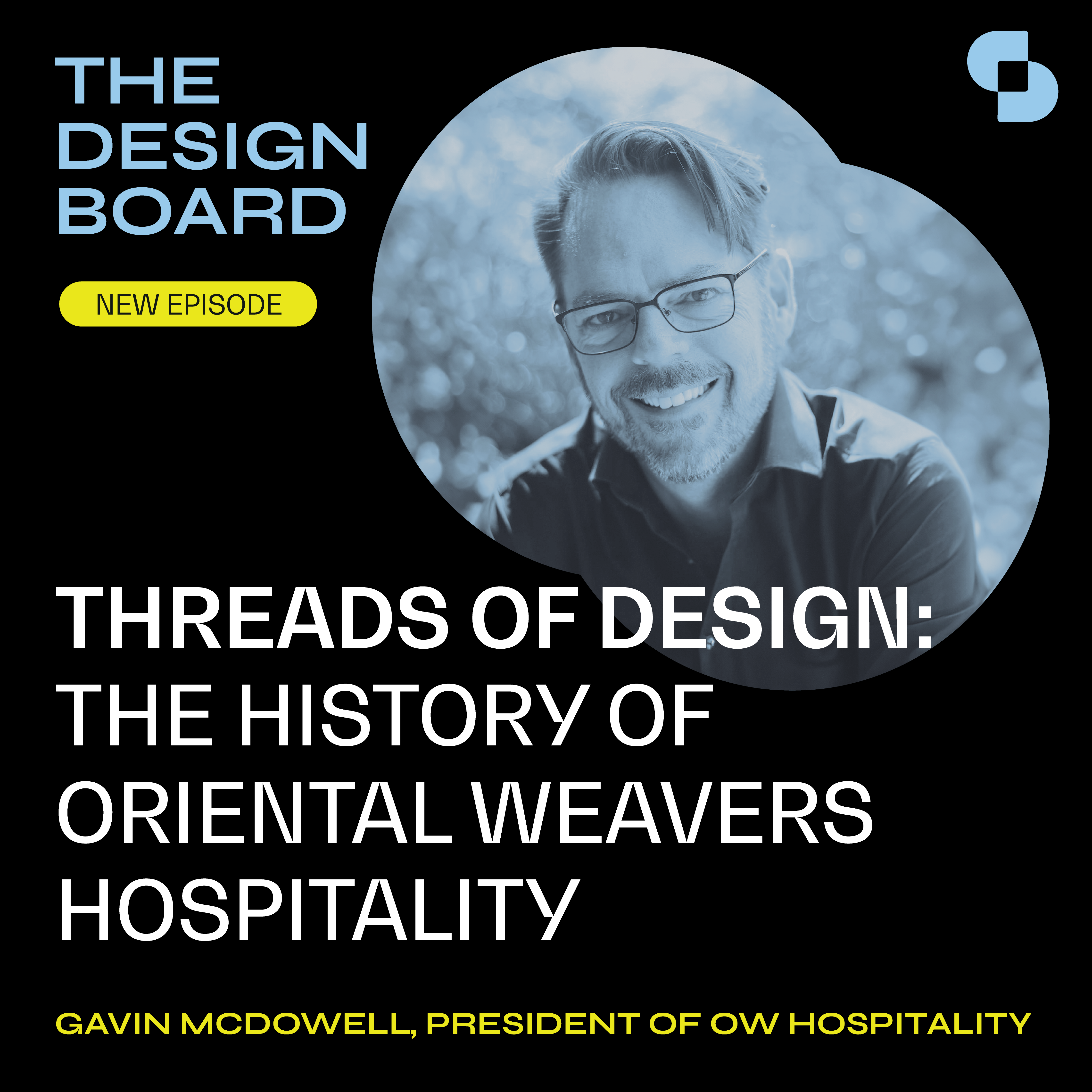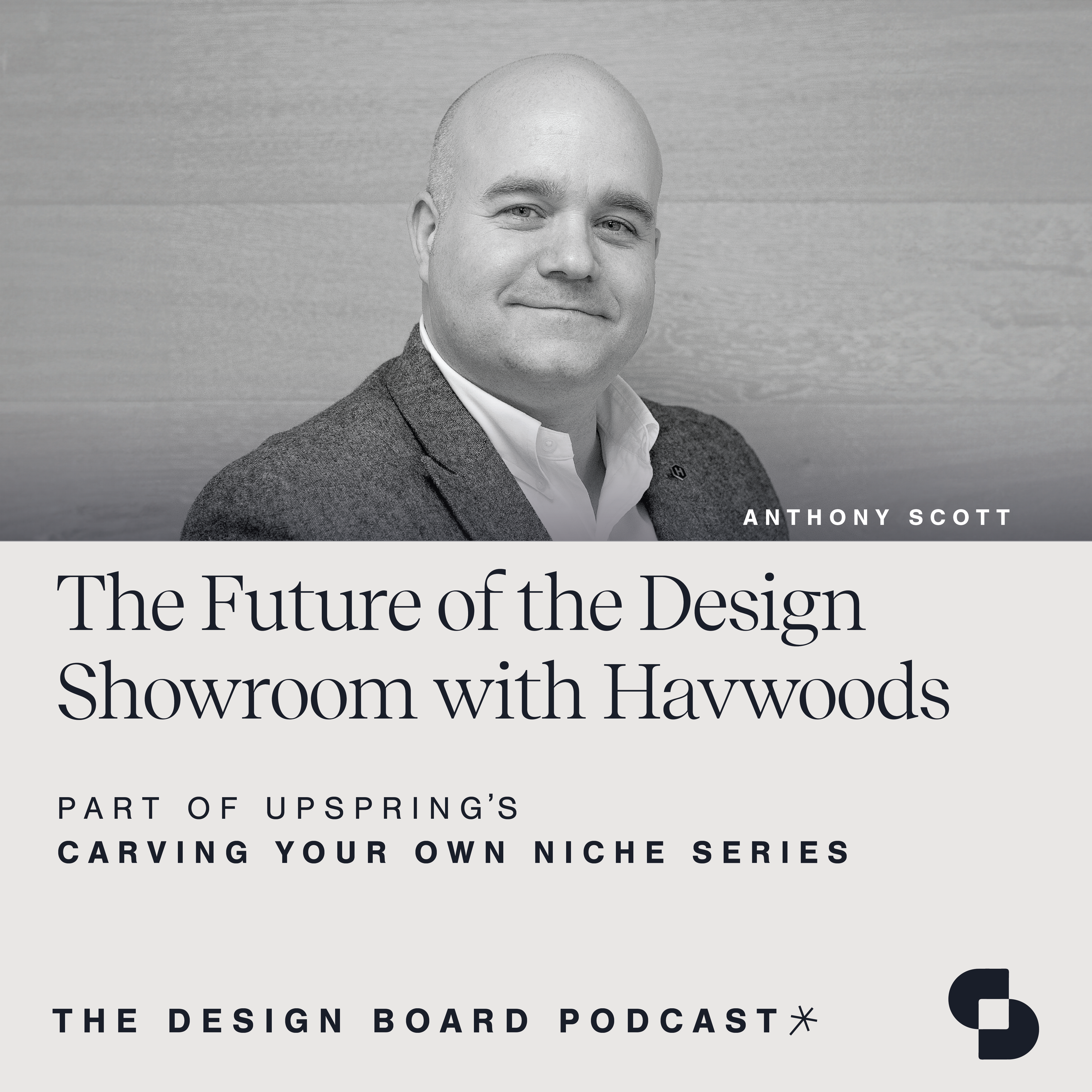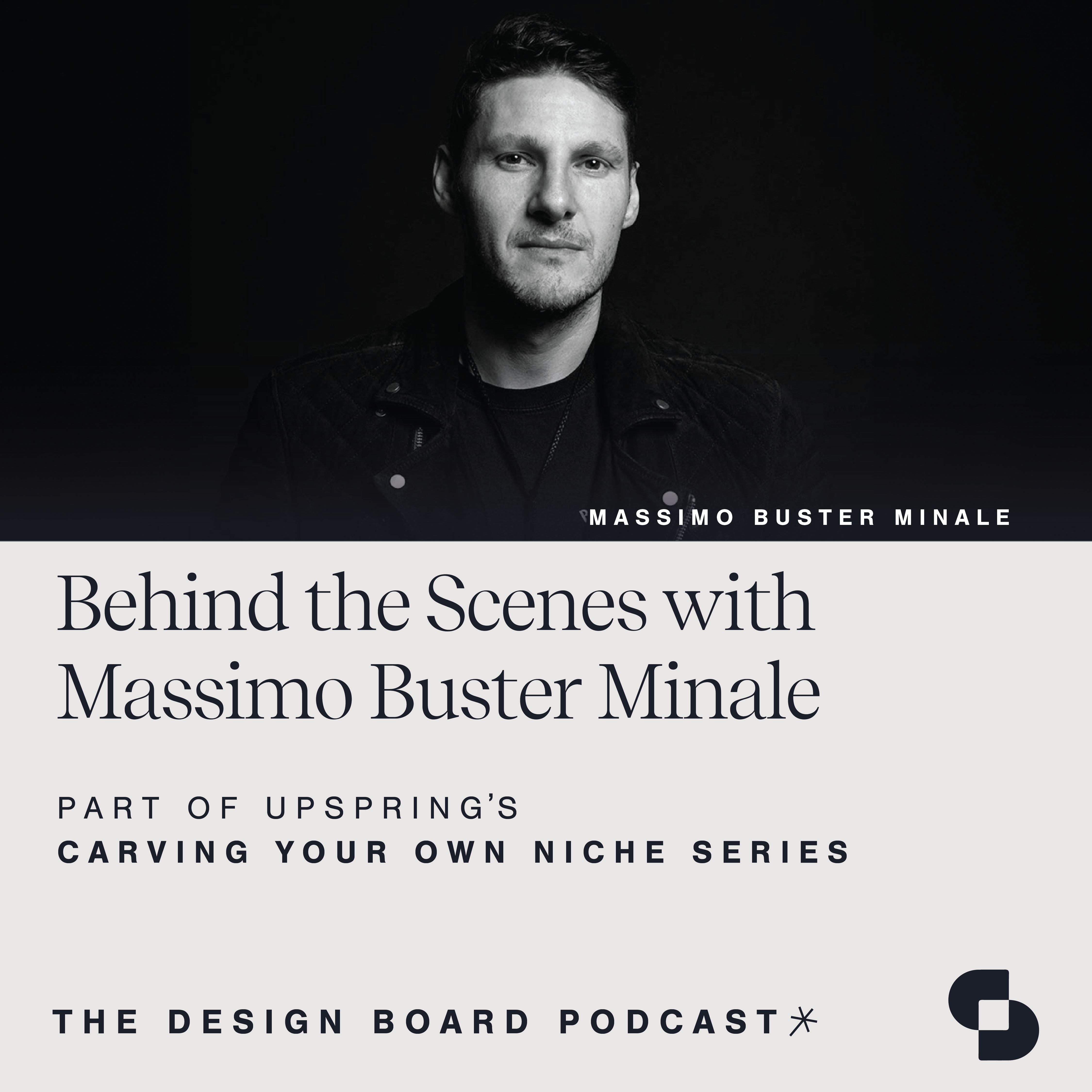Join us in this episode as we dive deep into pioneering sustainability efforts that are shaping a greener future. From revolutionary carbon offsetting architectural tiles to fostering local hemp advancement, we explore innovative projects aimed at reducing our environmental footprint. Discover how these initiatives empower communities, promote sustainable practices, and bring us one step closer to a more eco-conscious world.
Speaker 1:
Welcome to The Design Board, a podcast created by the team at UpSpring that focuses on design, development, and everything in between. We invite innovators in our industry and explore topics that support your growth in every way. The Design Board is a proud member of SURROUND, a podcast network from SANDOW Design Group featuring the architecture and design industry’s premier shows. Check it out at surroundpodcasts.com.
Susan Fernandez:
Emily, I’m so excited to welcome you to the show.
Emily Majewski:
Thank you, Susan. Just wonderful to be here. Full disclosure, of course, Susan is a minority co-founder with PHYTOSTONE, and I’m so excited to be moving forward in this innovation adventure with you.
Susan Fernandez:
Yeah, it’s really exciting. So for those who don’t know anything about this whole new material world, I know it starts with finding the raw ingredients, right? You’ve got to get everything pulled together. You are creating an ecosystem of women-led raw material and ingredient processing entities in New York. Can you tell us about that?
Emily Majewski:
Yes, absolutely. So PHYTOSTONE, as a whole, as a female founded firm, it’s been baked into our DNA to really amplify women’s influence in the built world beyond design, specifically beyond architecture and interior design. I’ve always been so in awe of how women interface with how spaces feel through their design contributions.
But even deeper than the kind of surface furnishing of space, we have this materiality, which when it comes to modern materials, whether you’re talking drywall, or plywood, or concrete, those have tended to be very masculine dominated innovations, which of course have transformed the face of the earth.
But we’re in a juncture right now where we’re kind of picking up the pieces as far as the damaging consequences to these materials that have a very linear pathway from make, to use, to landfill in most cases with the built environment, creating 50% of the world’s solid waste, more or less.
So it’s been always a deep concern of mine and passion as well to inject female values, which I would very much think of as far as valuing relationships and the ecology of relationships, the ecology of cause and effect, the ecology behind human interaction with our physical world and nature. And so it’s always been a focus of mine on how we can inject those values of circularity and mutualism between our materials, our inhabitants, and our world.
And so as an extension of that, as we move into product development in New York state, the idea of fostering a woman led ecosystem of vendors and suppliers has been a top priority to give more voice to female-led enterprises that are focused on the material world and material innovation beyond decor.
So when it comes to our material, we have a very heavy focus on plant-based component. It’s a biomaterial, a form of biogenic stone. And that means 50 to 80% of this innovation is comprised of plant matter, which of course has to come from somewhere, has to be grown and processed, and then incorporated into a final product.
And there’s a lot of nuances to the reality of that as far as when you’re dealing with natural materials, you have to be very focused on quality control and having consistency so that once you prove that you’ve integrated with a building code, that you’re going to have a consistent plant-based value chain that won’t waver from your safety standards, for example.
And so as we investigate the resources in New York state where all of this work is being conducted, I’ve always filtered our potential partners from this kind of gendered lens of where are the women in this supply chain and how we can connect those dots.
So as we’ll talk about more with what this material, how it’s made, one of the primary drivers of it is creating something called biochar. And biochar is where you take plant matter, and you burn it. It’s kind of a zero oxygen, low to no oxygen smoldering burn, which takes the carbon and almost crystallizes it into a very stable inert form that resists oxidation back into the atmosphere. So it’s preventing the decomposition of the plant material.
And so we’ve been lucky enough to find a biochar producer in New York state that’s a woman owned business. We have a couple possibilities down the road when it comes to casting this material into tiles, woman owned businesses there. Of course, UpSpring PR, which is very much a part of our future, is a woman-owned business as well. And we will be specifically targeting growers with women-owned operations, as well as specifiers, either as interior designers and architects to enlist in this world-changing invention.
Susan Fernandez:
It’s really interesting. I love this, because I think it is a turn as a society from a very male-driven society to a consciousness of being more female, more we instead of I.
Emily Majewski:
Absolutely. And I would say that the built environment gets a very bad rap when it comes to innovation. A lot of venture capitalists like to say it’s a slow moving innovation resistant sector.
But I would say if you look around us in these past 200 years with the inventions of concrete, and glass, modern versions of glass, and steel, and asphalt, that the built environment is a very, very innovation driven sector. But a lot of those innovations, because they emerged from the Victorian era, they were very focused on scalability, the idea of limitless energy, and zero acknowledgement of negative consequences or pollution.
And so they had this very compartmentalized and linear focus, which tended to orient around speed and efficiency. And as we know, particularly as women, particularly as women raising children, in many cases in homes, and working in these environments, there are a whole spectrum of other considerations beyond profit and scalability that affect our quality of life and our health.
And so of course, it’s super important, and there’s now this great awakening that’s happening that things like healthiness, things like being pro nature, and healthy indoor environments, and air quality, these are just as important if not more important than those kinds of economic drivers, which are also important. But they need to be considered along a spectrum of equally important design factors.
Susan Fernandez:
Emily, I would actually argue that they are going to be the new drivers of being scalable. Certainly we know that women in particular have become very interested and influential in how their homes, not only how they look, but how they’re constructed, because they realize that we spend 85% of our time indoors, and the quality and the health of that space is directly reflected in the quality and health of ourselves and our families.
So I think investors are shortsighted to think we’re just going to make a micro improvement on a brick and make a lot of money. I think it’s going to be driven by women, and getting in touch with what they see as valuable is going to be where this real scale comes from.
Emily Majewski:
Yeah, absolutely. And this was a bit of a silver lining to the pandemic, because as people were sequestered away in their homes, the understanding of the importance of air quality, for example, which is intimately tied to your building materials, really rose to the fore. And of course, healthy building just made more progress, I feel, during those several years of the pandemic as far as public awareness and desire than probably the past 30 years of environmentalism and building biology.
So yes, that was definitely a silver lining in terms of appreciation of our building materials, and the level of quality that they represent, and that not all materials are created equal.
And on top of that, I think there is a greater realization that we’re indoor creatures more than ever. And it’s really eyeopening when you think about how we breathe in 2,000 gallons of our air every single day. And if that air is primarily polluted, indoor air, that’s the equivalent of… If you were to equate breathing with drinking water, that’s about 2,000 gallon pool of polluted water that you’re ingesting on a daily basis. So the imperative behind healthy building materials was definitely accelerated the past couple of years.
Susan Fernandez:
Definitely. So I’m going to switch gears and get into something that is certainly new to me. And that is, how does this material count towards carbon drawdown in the built environment? And I think you’re going to have to explain carbon drawdown first, and then tell us how that counts towards it.
Emily Majewski:
Yes, absolutely. Well, the idea of decarbonizing the built environment has definitely caught on in the last few years as well. And that’s the idea of flipping the script from our built environment representing extreme carbon emissions, where the impacts of materials equate to particular amounts of carbon being released into the atmosphere, and flipping the script in the opposite direction where our built environment is potentially a carbon sink, and sequestering that here in a terrestrial sense rather than an atmospheric sense.
Because having that balance between carbon that’s in the air versus carbon that’s in our oceans, and our land, and our human made built environments, that’s potentially very, very important moving forward, amongst other things such as preventing other greenhouse gases from throwing things out of balance further.
So carbon drawdown, it’s generally perceived in two buckets. You have operational carbon, which is the amount of carbon impacts based on running a building, maintaining it, heating it, cooling it, etc. And then you have embodied carbon, which is the inherent carbon impacts to your materials and the impacts that they made during their extraction, processing, deployment, and demolition. So those are two carbon buckets that the built environment is on a mission to reduce.
So because our innovation, Cast Carbon, it is actually a mineral binder that encapsulates a set amount of this biochar based carbon, which is a very kind of crystallized solid form of carbon. It’s taking the built environment as a carbon sink through our surfacing, so we’re actually storing the carbon in the walls and ceilings, wherever these tiles would be specified. So it’s a very important strategy when it comes to reducing the carbon footprint of the built environment as it stands today.
Susan Fernandez:
Your innovation mimics how nature builds structures in plants. Can you explain how you combine carbon and minerals in your material formulation?
Emily Majewski:
Yeah. So as you mentioned before, my background was in horticulture and botany back in the day. And it struck me that when we look at the plant kingdom all around us, the strategy that nature is employing to build these plant morphologies and trunks, and leaves, and shoots, and roots, it really has to do with combining carbon with minerals.
When you think about how a plant photosynthesizes and grows, it’s basically vacuuming carbon from out of the atmosphere and storing it in its tissues, but it’s simultaneously below ground vacuuming minerals up, and combining the minerals with the carbon to create this physical plant structure.
And so when I had a turning point in my material development career where I realized that we would require new green chemistry and new innovation moving forward, that we can’t just turn the clock and strictly focus on heritage materials like lime and adobe, because they don’t necessarily hold up to modern living standards, and wear and tear, and expediency of installation, that we need to move forward with novel formulas that are higher performance, while also using natural ingredients.
I took my inspiration from this idea of combining carbon with minerals to create a strong, new material. And so you can really think of it as mineralized carbon or even petrified carbon as far as how the formula works.
Susan Fernandez:
That’s really interesting. It’s amazing. I think every problem can be solved by looking at nature. It’s already solved the problem in some way, in some form.
Emily Majewski:
Yes, absolutely. Nature has had billions of years to R&D materials, essentially. And it really strikes me as amusing, a lot of the conversation revolving around saving nature, which I find to be very presumptuous and patriarchal in a way because… And this might be controversial, let’s say, but nature doesn’t need saving. We are the ones that need saving.
Our species operates within very narrow parameters of temperature and other considerations where civilization can thrive. But nature was here long before us and will be long here after us. And the idea of us saving nature tends to be this kind of savior complex when the conversation really needs to revolve around how we can be more aligned with nature in order for us to thrive. And that may sound selfish, but that’s the reality.
Susan Fernandez:
I actually agree that we are the ones who need saving, which is maybe why we’re in this together.
Emily Majewski:
Absolutely. We need to reframe the conversation where nature is not this damsel in distress. It’s powerful, underlying reality that predates our petty concerns.
Susan Fernandez:
You’re encouraging industrial hemp production in New York. So tell me why this is important and what are the benefits? Because I think people have two perceptions of it. One, either it’s illegal and they’re totally confused. Or two, they think there’s just got to be an abundance of supply, because haven’t we been hearing about it for a while? So why are you taking an interest in this?
Emily Majewski:
Yes. Well, industrial hemp is a very, very interesting biomass proposition when it comes to creating these tiles. We have many, many options before us for making biochar. We could be using pine waste, we could be using agricultural residues. But hemp is an interesting possibility, which we are trialing alongside other possibilities.
But what I love about hemp… So to clarify, industrial hemp is related to marijuana and CBD hemp, but it doesn’t have the THC, or it has a very low limit of THC compared to those other crops. So it’s a cousin to them, but it’s not what you get high on. It’s its own thing.
And it’s been in cultivation for 5,000 years. Of course, started in China. It’s on the record as a crop, and I’m sure most people are aware you can make just incredible list of products from it, from textiles, to oil crops, etc. So it’s a very interesting crop.
But the reason why we’re zeroing in on this crop compared to other possible candidates for our biochar is that it photosynthesizes different from most plants.
There’s two types of photosynthesis. There’s C3 and there’s C4. Hemp is a C4 plant, which means it’s a hyper accumulator of CO2. It absorbs more than typical plants. It’s kind of in a league of its own, as are all C4 photosynthesizing plants. And I’m not going to get into the technicalities of the two different types of photosynthesis. But ultimately, the long story short is that one hectare of densely grown hemp can absorb 22 tons of CO2, which is very impressive compared to even trees. So if we are trying to vacuum CO2 from out of the atmosphere, hemp is a great avenue to do that.
It’s also a relatively low input crop compared to most crops. So for example, growing hemp for textiles requires 70% less water than cotton, and it takes half the water of corn on an equivalent acre. So when it comes to resources needed, it’s a relatively lower resource crop.
It’s also very effective at building up soil health. It has an incredible root system that tends to condition soils and improve them compared to the very deleterious nature of most other commodity crops out there.
There are some drawbacks to its hyper efficiency that we need to be aware of moving forward. So just like it’s hyper efficient at absorbing CO2, it’s also a hyper accumulator of heavy metals. So it’s often used in phytoremediation where you’re trying to vacuum heavy metals out of a contaminated site.
So moving forward, particularly using it in a building product, you have to know where it’s coming from, make sure, in my opinion, that it doesn’t contain cadmium or other heavy metals. But those are just some of the nuances to it being a very special kind of one of a kind crop.
New York state is definitely trying to create a market for industrial hemp for all those reasons, and so there are incentives here to focus on it as a crop. There’s a lot of work being done by Cornell University, where they’re developing dual purpose hemp seed sources or cultivars where you can get really high quality oil, but also use the stalks for various fiber purposes, whether it’s for animal bedding or for building materials. There’s a lot of possible end uses for the fiber, and then you get the oil crop to boot. So it’s a multipurpose, very exciting, superstar crop for the future.
Susan Fernandez:
Yeah, I think the provenance of where that hemp came from, as you said, is really important, because it can do so many things. What is the plan? So in cultivating hemp and using hemp, you’re going to have CBD oil. So what is the CBD production? What is the plan for repurposing the CBD production waste biomass?
Emily Majewski:
Yeah. Well, as we move into exploring these various feedstocks and what works best for our architectural tiles, we’re going to be focused on a couple different versions of industrial hemp.
So basically, when you have a hemp plant and you’re looking at the stock, there’s a woody core to the stock, which is called the hurd, H-U-R-D, and then there’s the fibers on the outside that get stripped off for the textile industry, and those fibers are called the best. So those are virgin crops. You’d grow them, you’d use them as a virgin material to make various products out of.
The thing with the CBD waste biomass is now that CBD production has been legalized, like any industry that is a big industry, it’s going to create large amounts of waste, which now need to be dealt with.
So for example, between 2019 and 2021, there was 200 million pounds of CBD hemp biomass that were generated in the US. And so the question becomes, how do we deal with that waste product? Are we incinerating it? Are we land filling it? Are we composting it? What do we do with all those stalks and branches?
So we are going to be trialing them a pelletized version of that waste biomass with our upcoming investigations, because rather than buying a virgin hemp feedstock, it allows us to tap into a waste stream, which of course should be theoretically less expensive.
But it comes with its own challenges as well. A lot of the CBD production, it’s coming from highly fragmented growers. So it’s the question now of, how do you consolidate those waste streams in an efficient way? Considering diesel might be $5 a gallon, the logistics of picking up this waste, which is a light fluffy waste, there could be some challenges there.
So we have to investigate all the possibilities using hemp, which would include purpose grown hemp for this end use versus tapping into waste streams that definitely need dealing with, but may come with their own logistical challenges as well.
Susan Fernandez:
Yeah, it is really interesting how to figure out how to use hemp and CBD responsibly. Moving to closing the loop between biocommodity production and architectural products sounds very ambitious, and it is. So how does this work? What’s the long-term goal?
Emily Majewski:
Well, the grand vision with these tiles is where we’re fostering a resilient, strong rural economy, growing these bio commodities, processing them in our case into biochar, and then moving on into a manufacturing stage where the biocommodities get combined with our mineral binder, cast into tiles. And then that moving into green collar jobs in cities, where these tiles can get retrofitted into the existing built environment.
So we’re really looking at the aerial view of this, is how do we support growers and farmers, the biochar production, the casting and manufacturing of tiles? You can see this is moving closer and closer to the city. The installation of the tiles in the city. And then eventually at end of service life, these tiles can be ground up and returned back to the farm as a soil amendment. So that’s the closing of the loop.
And that looks a certain way from a workforce perspective, moving from rural workforces, into manufacturing, into design and installation, and then the return to the original soils as an asset, the pulverized tiles. But it also has a very interesting story from a carbon perspective, because we’re looking at carbon capture across a timescale in graduated levels of, you might say seriousness.
So you start with the plant, which is absorbing the CO2, and kind of temporarily storing that carbon in its tissues. Now if left to its own devices, that plant would decompose and release most of that carbon back into the atmosphere.
So while the carbon is still in the plant, it’s captured there and stabilized through the biochar process, which kind of, like I said, crystallizes the carbon into this black, coarse powder in our case, which is very inert. So that’s a more serious level of carbon sequestration than what the plant can provide alone.
And then, we’re going to encapsulate that biochar carbon even further in what’s like a ceramic tile. So you’re encasing it in a mineral matrix, which is a deeper, more thorough form of sequestration.
And then that tile is getting encapsulated in the built environment for however many years more, 80, to 100, to 200 years potentially in the built environment. And then at the end of this loop, it can be returned to the soil where it’s long term stored as carbon in the soil.
So this is all about promoting the longevity of the carbon, and kind of graduating the quality of sequestration across a time scale. And providing a high quality, authentic sequestration through the built environment, while stimulating all kinds of jobs along the way.
Susan Fernandez:
I love this. It really goes back to the first question about building a female network, because I think this really is that very 360 full circle approach that women tend to see, and should be able to birth into existence. How’s that?
Emily Majewski:
Yes. All about that.
Susan Fernandez:
Yeah. So can you tell us, everyone focuses on new builds for green, right? So this is the first time we have to make it right. But what’s the importance of green solutions in retrofits?
Emily Majewski:
Yeah. I’m proud to say that this tile would be a relevant solution to both new builds and retrofits, which a lot of green innovation is not. A lot of the green innovation out there that gets a lot of buzz, if you think about, for example… And this is nothing against these new technologies, that it’s a wonderful step in the right direction.
But when you think about, for example, 3D printing or hempcrete, they’re really only relevant to new projects compared to the built environment as it stands today. And I’m sure there’s some exceptions to that, but as a general rule.
And so in the meantime, we have this built environment with just millions and millions of buildings across the globe, and trillions and trillions of dollars worth of assets that have already been created and are here with us today. And the question is, moving forward, how do we upgrade these buildings to be pro-nature and pro-occupant, healthy and more efficient?
And we can’t ignore the fact that there’s a built environment here and now that is getting older every day, that inevitably will need to be retrofitted in only a matter of time. And we need solutions that are relevant to today’s built environment.
And a lot of… I don’t know, there’s this quote or statistic that floats around a lot, and it has to do with the expansion of the built environment. I come across it all the time, that for the next 30 years, the built environment is expanding at a rate of a New York City being built every 35 days.
And I would love to know what that’s based on because… And maybe the information is out there and I haven’t come across it. But if you really pull back even further, I guess the UN has just come out with studies saying that 50% of the world’s population is now living in countries with below replacement level fertility.
So world populations are actually in many, many, many countries declining. And right now, even in Europe, 35 to 50% of offices are not being used, even during office hours.
So this whole idea of this infinite expansion of the built environment, it’s a theoretical, because there’s a lot of data that indicates that the expansion, it may or may not happen.
But what we can count on is the built environment here and now that already exists. So I am really excited to develop a solution that is relevant to an actuality rather than a theoretical expansion. And I think if anything in the last few years has taught us is we’re one crisis away from economies grinding to a halt. And this whole idea of just new building, new building, expansion, expansion, it’s a very, very delicate situation that’s tied to how well our economies are doing. And so it makes sense to me to focus even more so on the assets we’ve already created, and making them better.
Susan Fernandez:
That’s startling information. So given all of this, what are you most excited for the future? What does the next year hold for you?
Emily Majewski:
Well, I’m very excited about the future. Of course, waking up every day, it just seems like such a laundry list of crises and doom and gloom for all the various world events that are unfolding right now.
But personally, I really like to maintain a vision that is focused on a positive future, which actually takes effort because for example, if you’re on Netflix looking at sci-fi movies, pretty much at least 100 out of 100 are about dystopian futures. And I think that’s very arbitrary in that we have the potential knowing everything that we know, and the market impetus and the technology that we have to, we have the potential to build an incredible future for our children, and next generations, and a future we can be proud of.
And some of the trends out there in the industry that really motivate me is this pathway towards radical transparency when it comes to our materials. And I’m going to reign this in to the built environment since that’s our topic.
But it seems to me that what’s happening around the bend is this big building and materials are going to go the same direction as big food, where eventually we’re going to have a nutritional label on our materials, and that’s really going to account for impacts, the pros and the cons, so we can make informed decisions.
And if you look up nutritional label for building materials, there’s already a movement out there. But I think the writings on the wall, especially when it comes to carbon offsets and analysis of materials for their eutrophication potential and their circularity, that we’re moving into a new era of radical transparency, which will probably be facilitated by the blockchain. And we’re going to be able to make very informed decisions as consumers moving into the future.
And I’m really excited to work on a material that we can be proud of, that when it comes to its environmental and human health benefits, its circularity, we’re going to be there with the best of them.
Susan Fernandez:
Absolutely. I have seen those companies that are putting those labels on materials and products so far. It’s really exciting to be at the forefront of that. And lastly, so I love your perspective. Obviously, it’s where I think we have a meeting of the minds of let’s move this industry. It’s very, to me, a very positive industry. It’s about growth, it’s about planning for the future. It’s how we live our lives. Bringing this product to market for me is just an incredible journey and a very small way to participate in this conversation. What motivates you to bring this innovation to market?
Emily Majewski:
Well, generally speaking, it’s very important to me to focus on creation over fear. And our society tends to revolve a lot around fear. And even if you’re doing a pitch deck for a venture capitalist, it’s a very problem/solution orientation that you’re supposed to present your arguments in. And for me, creation is something that transcends problems and problem solving.
So I guess an example of that would be for a yo-yo dieter, for example. If you’re focused on your weight and the number of pounds that you weigh, that tends to become this yo-yo situation of progress and regress, and progress and regress.
But when you’re focused on something that transcends weight, like for example, living vibrantly and as the best version of yourself, the weight will resolve itself as an after effect, because your mentality is higher than problem, solution, orientation.
I mean, ironically, right now we’re occupying a space. It’s called the Tri-Main Center in Buffalo, and it was originally a Model T factory from turn of the century. And so I’ve been thinking a lot about that innovation, because it’s kind of baked into the DNA of the environment.
And when you think about the invention of the automobiles, at the time, you’re talking about a horse and buggy type of world where there is a lot of sanitation problems that came along with these urban centers, where you just have tonnage of manure being generated every day. And there was a lot of diseases at the time, infectious diseases.
And it would’ve been easy for Henry Ford to be in this problem mentality of, “How do we clean up the streets to prevent infectious diseases?” But as an innovator, he was a creator, and he created on a new vision for the future, and he wasn’t bogged down in this problem solution paradigm or kind of Hegelian back and forth.
So he was focused on opening up new categories of transportation. And I often feel the same way moving forward, is what motivates me is creating an incredible built environment for future generations, and to not get bogged down in the scarcity mentality that seems to run our society.
Susan Fernandez:
Oh yeah. I love that. That’s really exciting. Emily, thank you so much for joining us. And for those who want to talk to you more about what you’re doing or maybe even get involved, how can they reach you?
Emily Majewski:
You can definitely reach me at [email protected]. If you want to check out our website for the innovation, that’s www.castcarbon.com. So that’s our spinoff material that PHYTOSTONE has incubated. I’m not on social media, but I am an email kind of girl. So if anyone wants to reach me, that’s the best way.
Susan Fernandez:
Thank you so much.
Emily Majewski:
Thank you, Susan, and for all of your support in this adventure as well. Goes without saying.
Susan Fernandez:
It’s exciting. Happy to be here.
Speaker 1:
Thank you so much for listening in with us today. We hope you leave inspired by the ideas in today’s episode. For more, follow UpSpring on LinkedIn and Instagram, and don’t forget to check out the amazing lineup of shows brought to you by the SURROUND podcast network at surroundpodcasts.com.

